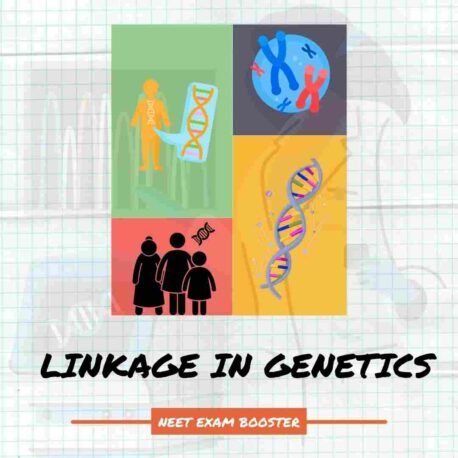Linkage: Genetics is a branch of biology that deals with the study of heredity and variation. Heredity is possible due to linkage, and crossing over is responsible for variation.
Linkage in Genetics
To understand linkage, we first need to understand what is meant by the word genetics. Genetics is the study of heredity and variation. Heredity takes place due to linkage, and crossing over is responsible for variation.
Now, let’s move on to linkage. Linkage means that something is linked, and when something is linked, it will be transferred as it is to the next generation. When genes are found on different chromosomes, they are not linked to each other, as their distance is very far from each other. However, genes that are found on the same chromosome and are very close to each other are called linked genes.

The distance between the two genes decides the linkage. If the distance between the two genes is very small, it means the chance of crossing over is also very low, and we can say that the genes are linked. If the genes are far apart from each other, the chance of crossing over is very high, and they are not linked. The genes that are not linked are called unlinked or non-linked genes.
Linkage is purely dependent on the distance between the two genes. When the distance between the two genes is very large, the chance of crossing over is also very high, and the recombination is also very high. Therefore, the linkage is very low. If the genes are very close to each other, the chance of crossing over is very low, and the linked genes will be transferred as a whole to the next generation.
Let’s understand it with an example. Consider two genes that are located on different chromosomes. If the genes are far apart, the chance of crossing over is very high, and the recombination is also very high. In this case, the genes are not linked. However, if the genes are located on the same chromosome and are very close to each other, the chance of crossing over is very low, and the linked genes will be transferred as a whole to the next generation.
The number of linked genes is directly related to the number of haploid chromosomes. For instance, a human body has 46 chromosomes, which are divided into 23 pairs. Therefore, the number of linked genes in a human is 23.
There are two types of linkage – complete linkage and incomplete linkage. When the genes are very close to each other, there is no chance of crossing over, and the linked genes are transferred as a whole to the next generation. This is called complete linkage. In contrast, incomplete linkage has a higher chance of recombination and a lower percentage of parental alleles.
When the genes are located on the homologous region of the chromosome, they are not linked because there is a chance for crossing over. However, if the genes are located on the non-homologous chromosome, they are linked because there is no chance of crossing over.
Conclusion For linkage
Conclusion: Linkage is the phenomenon of genes being inherited together due to their proximity on the same chromosome or linkage group. It is affected by the distance between the genes and the frequency of crossing over.




 155 out of 200 questions were directly asked from these notes in NEET 2024
155 out of 200 questions were directly asked from these notes in NEET 2024
